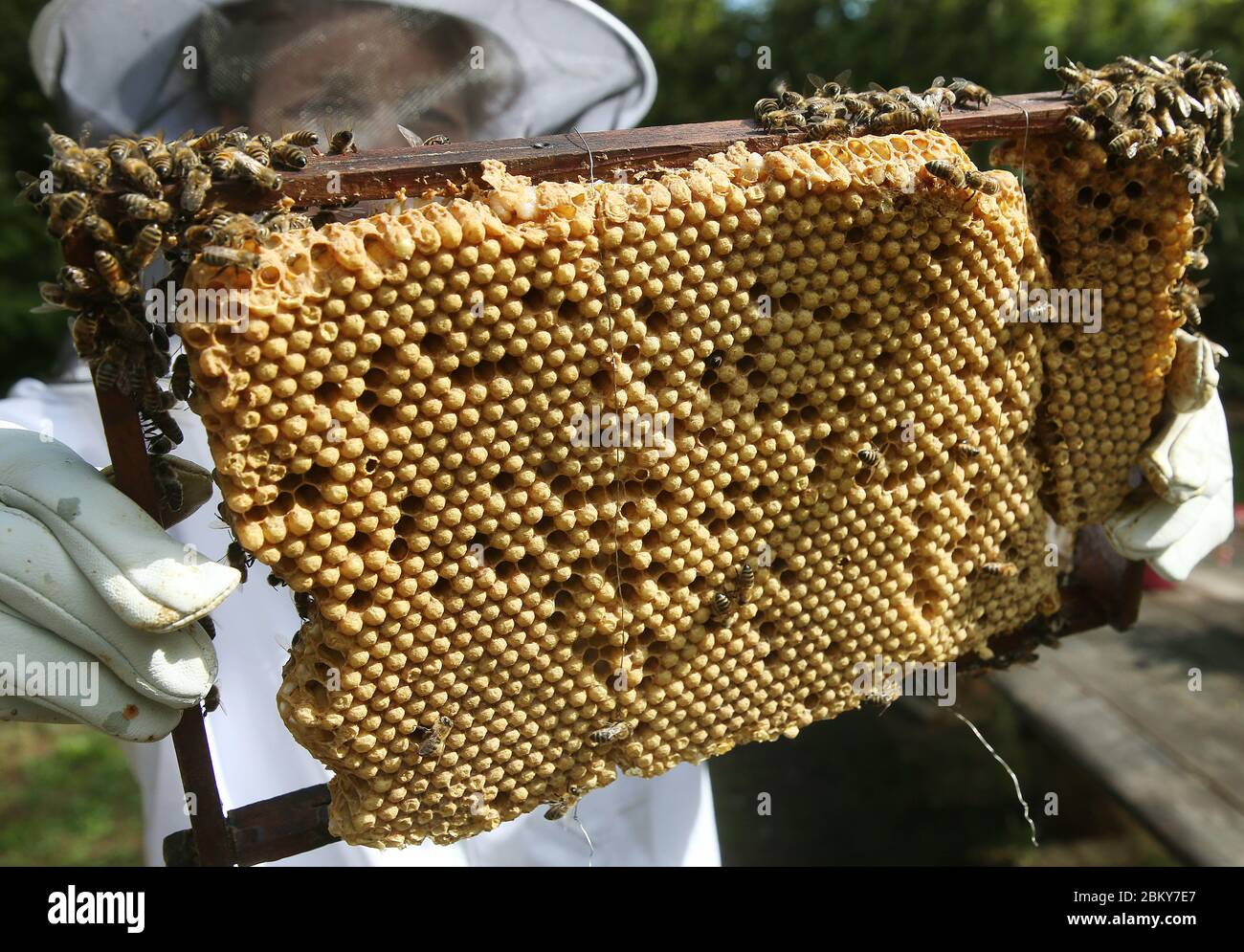05 May 2020, Berlin: A beekeeper holds a honeycomb with covered drone brood in her hands, which she has cut out of a beehive. The beekeepers remove the drone brood from the bee colonies to prevent or contain the spread of the dreaded Varroa mite. The mite, which was introduced from Asia in the 1970s, is oval, 1.4 mm wide and 1.2 mm long and lays its eggs in the bees' covered brood cells. The mites sting the young bee larvae and suck the blood to feed. The bee larvae are weakened by the blood loss and are susceptible to pathogenic viruses and bacteria. As the bees hatch, the mites also leave th

Image details
Contributor:
dpa picture alliance / Alamy Stock PhotoImage ID:
2BKY7E7File size:
44.5 MB (1.9 MB Compressed download)Releases:
Model - no | Property - noDo I need a release?Dimensions:
4723 x 3290 px | 40 x 27.9 cm | 15.7 x 11 inches | 300dpiDate taken:
5 May 2020Photographer:
dpaMore information:
This image could have imperfections as it’s either historical or reportage.
05 May 2020, Berlin: A beekeeper holds a honeycomb with covered drone brood in her hands, which she has cut out of a beehive. The beekeepers remove the drone brood from the bee colonies to prevent or contain the spread of the dreaded Varroa mite. The mite, which was introduced from Asia in the 1970s, is oval, 1.4 mm wide and 1.2 mm long and lays its eggs in the bees' covered brood cells. The mites sting the young bee larvae and suck the blood to feed. The bee larvae are weakened by the blood loss and are susceptible to pathogenic viruses and bacteria. As the bees hatch, the mites also leave the brood cell and migrate to another. Without treatment, the mites multiply so strongly that a colony dies after two to three years. Photo: Wolfgang Kumm/dpa